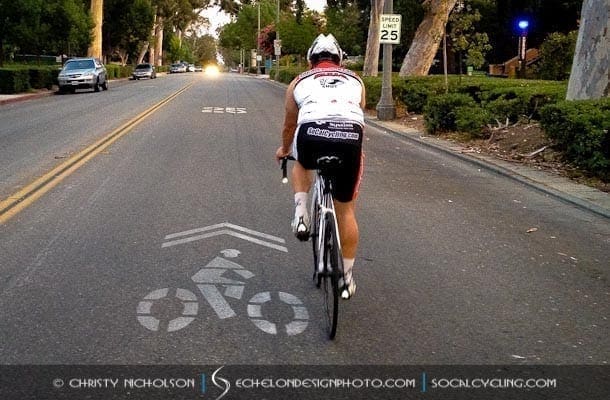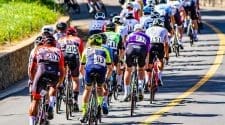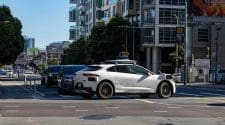There are few things more serene than riding a bicycle outdoors… that is, until you’re swerving out of the way of car doors, dodging angry motorists, or dreading the busy intersection that separates you from work. Bikes can be just as wonderful as they are frightening, so it is vital that you prepare before you step off. While there’s no way to stop a careless motorist, here are some situations you can actively avoid and prepare for.
1) The Right Cross
Problem: You’re riding along when, suddenly, a car appears from your right from another street or driveway. Before you even have time for colorful language to escape your lips, you’re swerving out of the way, running into their driver’s side door, or getting nipped in the back of the bike by their bumper.
Solution: This is the most common crash bicyclists face. While there are some situations that are impossible to avoid, the majority of them can be skirted with caution. Especially for nightriders, investing in a headlight is key to alert cars of your presence before your full bike is in view. Riding at a slower speed in known problem areas is also a good way to increase your reaction time. And, most of all, be sure to err on the side of caution and ride further to the left from the curb than you might normally consider. Despite what the guiding lines of most bike lanes say, giving yourself more room is always an option.
2) The Door Slam
Problem: It’s a cliché seen in many-a-movie before — you’re riding you bike down a lane of parked cars when, out of nowhere, a driver sitting in their car opens their door right in front of you, leaving you no option but to run straight into it.
Solution: As impossible as the chances might seem, this is one of the second most common crash types in a variety of US cities. To prevent this, be wary of parked vehicles and be sure to give yourself room to avoid the car door before it’s opened by surprise. Just assume that every parked car has a person sitting in the driver’s seat, ignorant of their surroundings and just waiting for the perfect chance to fling their door open. Like most crashes, predicting the outcome before its a possibility can prevent it from happening altogether. A good rule of thumb is that if you can reach out and touch the side-mirror of a parked car, you’re riding too close.
3) The Crosswalk Collision
Problem: You’re riding along the sidewalk when you get to a crosswalk to cross the street. An oncoming driver, looking to turn onto this same street you’re crossing, doesn’t know to look for a bicycle and crashes into the side of your bike.
Solution: Drivers are rarely faced with a situation where they need to be aware of fast-moving objects on sidewalks. Especially when it comes to bicycles, drivers are generally more trained to notice cyclists on the road. As a general rule of thumb, it is best to avoid riding your bicycle on the sidewalk to avoid this predicament altogether. In fact, bicyclists who use the sidewalk are more than twice as likely to get into an accident than those who use the street.
4) The Right Hook
Problem: You’re happily riding along the road when a car/truck/motorcycle/unicyclist/bicyclist tries to make a right turn, not noticing you are there. Whether they turn in front of you (causing you to hit their side) or they turn into you (colliding with your side) neither result makes for happy riding.
Solution: As with the majority of crashes, always ride more to the left. It is always best to give yourself more riding room and reaction time than to force yourself to align with the curb. Be sure to make frequent use your handlebar mirrors as well (which are extremely necessary) to keep yourself out of potentially sticky situations like these. And, as a general rule, be sure to never pass opposing vehicles on the right — this delves into blindspot territory and threatens to leave you regretting the attempt.
5) The Rear End
Problem: You’re riding your bicycle on a normal two-way street, when you swerve slightly to the left to avoid another parked car or obstruction in the road. Not expecting this move, the driver behind you crashes into your bicycle.
Solution: Always be sure to stay as aware as possible of your surroundings. If this means riding slightly more to the left (am I getting repetitive here?) to avoid potential hazards down the line, ferociously checking your mirror, or even getting off of your bike to walk it to the sidewalk, then be sure to do so. If you are ever moving further into the middle of the road, you need to know exactly what is behind you before you do so. Signaling is also vital in alerting other drivers of your actions, so be sure to brush up on your traffic laws. Finally, avoid weaving in and out of parking lanes, as drivers will not be expecting you to merge back onto the road.
This article was created by Personal Injury Help, an organization dedicated to providing the public with information about personal injury and safety information. Nothing in this article constitutes legal advice or opinion, and is intended for informational use only. To find out more about them, you can go to personalinjury-law.com or contact them at [email protected].
No products found.
















